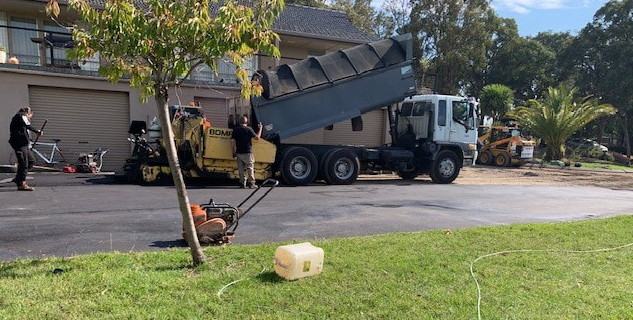Asphalt is one of the most reliable surfacing materials for roads, driveways, and commercial accessways—but only when it’s installed correctly. In Wagga Wagga, NSW, where weather conditions and varying traffic loads can quickly expose any weaknesses in construction, poor asphalt installation can result in costly problems much sooner than expected.
At Wagga Wagga Road Tech, we’ve seen firsthand the damage caused by substandard asphalt work. Whether it’s a residential driveway or a council road, shortcuts during installation lead to early deterioration, safety risks, and expensive repairs.
Why Proper Asphalt Installation Matters
Asphalt surfacing is not just about laying down hot mix and rolling it flat. It involves detailed planning, site preparation, material selection, and professional application techniques. When any of these steps are skipped or rushed, the results are almost always problematic.
The consequences of poor workmanship are not just aesthetic—they can shorten the life of your surface by years and significantly increase long-term maintenance costs.
Common Problems Caused by Poor Asphalt Installation
Cracking
One of the first visible signs of a poorly laid asphalt surface is cracking. This can take many forms, from hairline surface cracks to widespread structural failure.
- Alligator cracking is a pattern of interconnected cracks that indicate base layer failure.
- Linear cracks often occur when joints are not properly sealed or compacted.
- Edge cracking can result from weak shoulders or poor support at the boundaries.
Cracks allow water to infiltrate the pavement, leading to erosion and further damage beneath the surface.
Potholes
Potholes are a direct result of water infiltration and traffic stress on weakened asphalt. When the underlying base is poorly compacted or improperly drained, water creates voids that collapse under pressure.
- Safety hazard for vehicles and pedestrians
- Accelerates damage to the surrounding pavement
- Indicates structural failure that can spread quickly
Surface Rutting
Rutting occurs when the asphalt surface becomes depressed in wheel paths, often due to inadequate compaction during installation or insufficient thickness of the surface layer.
- Creates water pooling and drainage problems
- Increases risk of hydroplaning on roads
- Makes the surface uneven and uncomfortable for drivers
Raveling
Raveling is the loss of aggregate from the asphalt surface, usually due to improper mix design, low binder content, or poor compaction.
- Results in loose stones and a rough surface
- Reduces skid resistance and overall durability
- Can lead to complete surface breakdown over time
Poor Drainage
Water is the biggest threat to any asphalt surface. When grading and slope are not properly designed during installation, water collects on the surface or seeps into the layers below.
- Accelerates base and sub-base failure
- Causes soft spots and surface deformation
- Leads to premature repairs and safety issues
What Causes These Problems?
Most asphalt failures stem from one or more of the following installation issues:
- Inadequate site preparation – Failing to clear, grade, and compact the base properly
- Wrong mix design – Using the incorrect asphalt blend for the traffic and climate
- Insufficient layer thickness – Applying too thin a layer that cannot handle traffic stress
- Poor compaction – Failing to compact the asphalt thoroughly and evenly
- Lack of attention to drainage – Ignoring slope, camber, or water runoff design
Unfortunately, many of these mistakes are not obvious until the surface starts to deteriorate.
Why Quality Matters in Wagga Wagga
In Wagga Wagga, the combination of summer heat, winter moisture, and varied vehicle loads makes quality installation critical. A well-installed asphalt surface will adapt to ground movement, resist cracking, and drain properly—extending its lifespan and reducing maintenance costs.
At Wagga Wagga Road Tech, we approach every job with local knowledge, proven installation methods, and a commitment to doing things right the first time.
Our Approach to Preventing These Problems
- Detailed site evaluation to assess drainage, soil stability, and traffic requirements
- Correct base preparation using quality materials and proper compaction techniques
- Tailored mix design suitable for local conditions and surface function
- Accurate grading and slope to ensure optimal water runoff
- Professional machinery and operators to ensure consistent finish and compaction
We don’t cut corners—because we know the cost of having to fix them later.
Conclusion
Poor asphalt installation can lead to serious problems—cracking, potholes, ruts, drainage issues, and more. These aren’t just inconvenient—they’re costly and potentially unsafe. The good news is that these issues are entirely preventable with the right team and proper process.
If you’re planning a new surface or need to address problems with an existing one in Wagga Wagga, contact the professionals at Wagga Wagga Road Tech. We’ll provide honest advice, long-lasting results, and asphalt solutions that deliver real value.
Call us on: 02 5926 2530
Click here to find out more about Wagga Wagga Road Tech
Click here to complete our contact form and see how we can help with your driveway needs.

